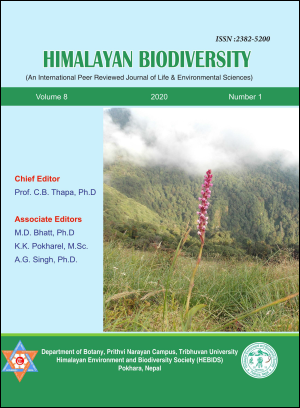A Study on Toxic Effect of Chemicals and Control Strategies
DOI:
https://doi.org/10.3126/hebids.v8i1.40240Keywords:
Antidote, carcinogens, carboxyhaemoglobin, formalin, pollutants, toxic chemicalsAbstract
Poisons are substances that can cause death, injury or harm to organs, tissues, cells and DNA usually by chemical reactions or other activity on the molecular scales, when an organism is exposed to a sufficient quantity. The objective of the study was to identify the toxic chemicals, to study their poisoning effect and present poisoning reduction strategies and then precautions. Analytical research method was used for conducting this research. This study is focused on the toxicity of major harmful chemicals such as hydrogen sulphide, carbon monoxide, carbon dioxide, chloroform, Sulphur dioxide, ammonia, formaldehyde, hydrogen cyanide, mercury, arsenic, cadmium and their compounds, catalyst, inert gases, insecticides, antidote which have been used in chemistry laboratories and in other different fields. Students from higher education to research levels are suffering from toxic laboratory chemicals. Workers in chemical industries are being intoxicated from poisonous reactants, intermediates and final products. Farmers are directly exposed to chemical fertilizers, insecticides, pesticides, herbicides, and fungicides. Different types of toxic irritant, sensitizer, asphyxiates, anesthetics, narcotics, systemic poisons, respiratory fibrogens, and carcinogens are mainly responsible for animal poisoning and environmental pollution. Poisoning from toxic chemicals can be controlled by the strategies like substitution, mechanical handling, process changing, suppression, segregation, ventilation, personal protection, medical supervision and biological monitoring. Immediate accidental poisoning can be managed by using respective antidotes and obeying specific precautions.
Downloads
Downloads
Published
How to Cite
Issue
Section
License
© Himalayan Environment and Biodiversity Society (HEBIDS)

